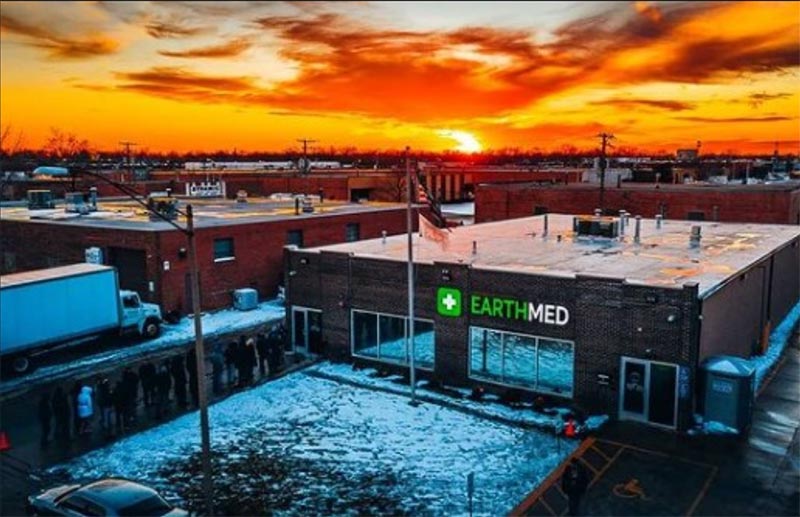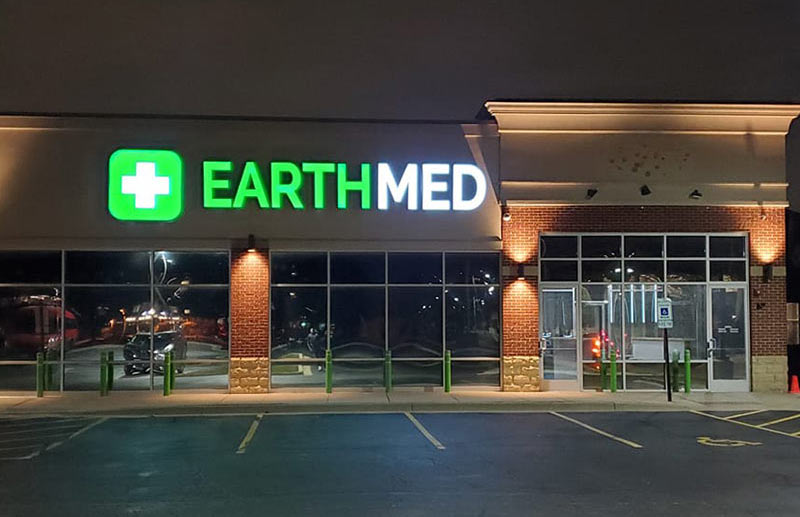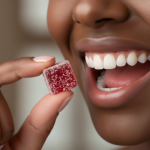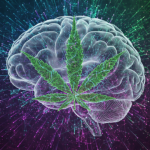Are you at least 21 years of age or hold a valid medical marijuana card?
Daily Specials
{{ special.title }}
{{ special.description }}
*{{ note }}EARTHMED BLOG

Edibles & Metabolism: How Long THC Stays in Your Bloodstream & Body
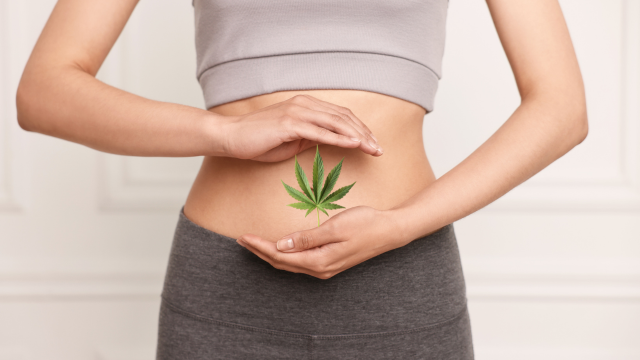
TL;DR: Edible cannabis has to pass through weed digestion before THC reaches your bloodstream. That means the effects take longer to show up, but also hang around longer than if you smoked. Because your liver transforms THC into a more potent compound and THC is stored in body fat, traces can stick around for days or even weeks. Blood and saliva tests usually detect use within 24 to 48 hours, urine tests can catch it for up to a month, and hair tests can flag it for three months. How long edibles stay in your system depends on your dose, how often you use, your body fat, and the type of test. There's no quick detox hack. Only time, hydration, and healthy habits will help clear THC.
How Long Do Edibles Stay in Your System? Breaking Down THC Metabolism and Weed Digestion
Edibles metabolism works differently from smoking because weed digestion sends THC through your digestive tract and liver before it makes it into your bloodstream. On the way, your liver converts delta‑9‑THC into 11‑hydroxy‑THC, a version of THC that is stronger and lasts longer. That’s the real reason why edible highs can feel deeper and stick with you longer. When you understand how your body processes an edible, it’s easier to dose responsibly and anticipate how long THC in bloodstream might be picked up on a drug test.
According to Recovered, this metabolite is much more potent than what you get from inhaled THC. That’s what gives edibles their reputation for coming on slow, hitting hard, and keeping you on that ride longer than expected.
Why THC Metabolism and Weed Digestion Matter
Inhaled cannabis gets into your system quickly. You can feel it within minutes. Edibles take a detour. Food needs to be broken down in the stomach and small intestine before any cannabinoids are absorbed.
After that, THC heads to the liver, which transforms it into 11‑hydroxy‑THC. This form of THC crosses the blood–brain barrier more easily and is more psychoactive. THC is fat-soluble, meaning it gets stored in fat tissue and released slowly over time. That’s why THC in bloodstream can show up even after the effects have faded.
Factors Influencing How Long Edibles Are Detectable
1. Dose and Frequency of Use
The more THC you consume, and the more often you consume it, the longer it sticks around. A single 5 mg edible might clear out in a few days. But if you’re eating strong edibles regularly, your fat cells soak it up like a sponge. That slows down elimination and increases detection time. Because edibles take time to kick in, a lot of people redose too soon. That’s called stacking, and it usually means the high will hit harder and last longer. Higher potency edibles and larger THC concentrations also extend how long THC hangs out in your system.
Pro‑Tip: Start with 2.5 to 5 mg, wait a full two hours for weed digestion to finish before you take more, and always check the label. If you need help with dosing, check out our guide on edible THC limits. High doses can trigger anxiety or a green‑out. If that happens, our tips on sobering up will help you stop feeling yucky.
2. Body Composition and Metabolism
Since THC is fat-soluble, people with higher body fat percentages tend to retain THC metabolites longer. If you have a faster metabolism or a lower BMI, you might clear it more quickly. Your body’s efficiency also depends on genetic factors, your biological sex, and the functioning of your liver enzymes.
Pro‑Tip: Hydrate, eat a fiber-rich diet, and move your body. All of that helps support natural elimination. If your metabolism runs slow, build in more time between sessions. Medical conditions like liver or kidney disease can slow the whole process down. If that’s you, it’s worth talking to your doctor before consuming edibles.
3. Type of Drug Tests
Every test looks for THC a little differently. Blood and saliva tests tend to detect recent use, usually within one to two days. Urine tests are more sensitive to metabolites and can find THC from 3 days up to a full month, depending on your use patterns. Hair tests are the most long-term, detecting cannabis use up to 90 days after consumption. Because weed digestion produces that extra-potent 11‑hydroxy‑THC, edibles may stick around longer than smoked weed when it comes to test results. And yes, even some full-spectrum hemp products can carry enough THC to trigger a positive result.
Pro‑Tip: If you have a drug test coming up, plan accordingly. Depending on the type of test, you may need to abstain from edibles for days or even weeks. If you still want to consume, consider switching to products with lower THC content. Remember, cannabis drug tests don’t care whether your use is medical or recreational. If your job or safety depends on a clean result, it’s safest to abstain entirely.
Best Practices for Managing Edible THC
- Start low and go slow. Give your body time to digest and process the THC.
- Read product labels carefully and track how much you’re consuming.
- Stay hydrated and eat a balanced, fiber-rich diet to support healthy digestion.
- If you know you’ll be tested, give your body plenty of time to naturally eliminate THC.
- If you start feeling overwhelmed, anxious, or too high, refer to our green‑out guide or talk to a professional.
The Bottom Line on Edibles & Metabolism
Edible cannabis offers a smoke-free option, but it comes with a metabolic twist. Weed digestion sends THC through your digestive system, where it gets converted by the liver into a stronger compound. That’s why edibles' metabolism results in THC in bloodstream that sticks around longer than what you’d see with smoking. How long it stays depends on your dose, how often you use it, your body composition, and the kind of test you’re facing. There’s no shortcut here, just smart planning and giving your body time.
Do you keep track of how edibles affect you over time? Hit me up on social media, and let’s spark up a conversation about it!
{{ locations[0].name }}
{{ locations[0].address }}{{ locations[0].city }}, {{ locations[0].state }} {{ locations[0].zip }}
{{ locations[0].phone }}
Hours
Sun: {{ locations[0].hours_recreational.Sunday }}Mon: {{ locations[0].hours_recreational.Monday }}
Tue: {{ locations[0].hours_recreational.Tuesday }}
Wed: {{ locations[0].hours_recreational.Wednesday }}
Thu: {{ locations[0].hours_recreational.Thursday }}
Fri: {{ locations[0].hours_recreational.Friday }}
Sat: {{ locations[0].hours_recreational.Saturday }}
{{ locations[1].name }}
{{ locations[1].address }}{{ locations[1].city }}, {{ locations[1].state }} {{ locations[1].zip }}
{{ locations[1].phone }}
Hours
Sun: {{ locations[1].hours_recreational.Sunday }}Mon: {{ locations[1].hours_recreational.Monday }}
Tue: {{ locations[1].hours_recreational.Tuesday }}
Wed: {{ locations[1].hours_recreational.Wednesday }}
Thu: {{ locations[1].hours_recreational.Thursday }}
Fri: {{ locations[1].hours_recreational.Friday }}
Sat: {{ locations[1].hours_recreational.Saturday }}
